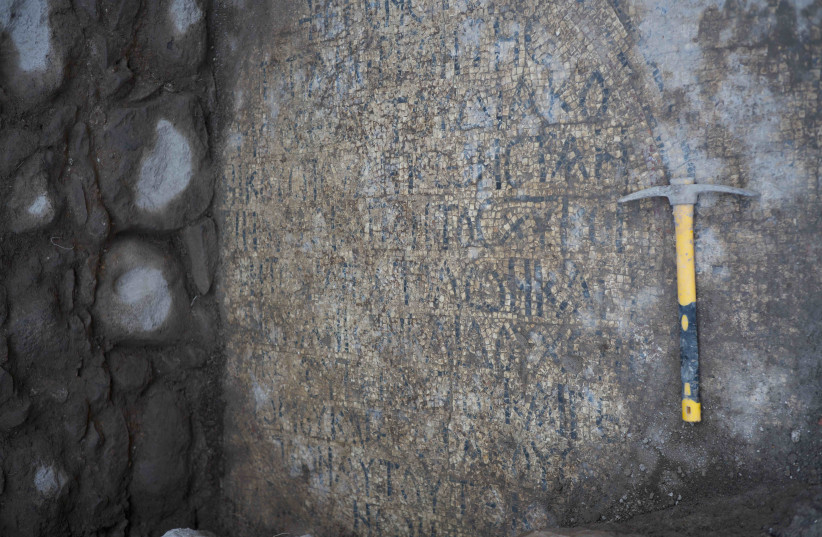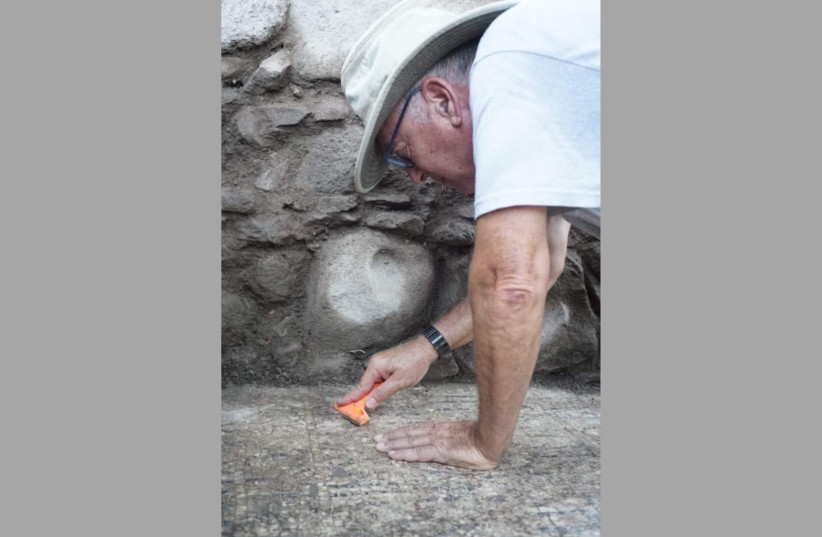 Have archaeologists found the home of St. Peter? – study
Have archaeologists found the home of St. Peter? – study
JERUSALEM POST STAFF
While the location of the Biblical Bethsaida is still debated, archaeologists believe this new find may help settle the debate.
.

A group of archaeologists believe that they have found the site of the home of St. Peter in the remains of an ancient church on the northeast shore of the Kinneret (Sea of Galilee) in a site which may be the biblical Bethsaida, the birthplace of three of Jesus’ Apostles – Peter, Andrew and Philip.
Archaeologists from Kinneret College in Israel and Nyack College, NY, led by Prof. Mordechai Aviam and Prof. Steven Notley, found a large Greek inscription during excavations in a structure called the “Church of the Apostles” at the el Araj/Beit haBek dig. The structure dates back to the Byzantine period.
The inscription, which was translated by Prof. Leah Di Segni of the Hebrew University in Jerusalem and Prof. Yaakov Ashkenazi of Kinneret College, references a donor “Constantine, the servant of Christ” a petition for St. Peter to pray on behalf of the person. The inscription refers to Peter as “chief and commander of the heavenly apostles.”
The title “chief and commander of the heavenly apostles” is routinely used by Byzantine Christian writers to refer to the Apostle Peter, according to archaeologists.
The inscription is framed with a round medallion made of two lines of black tesserae (small pieces of hard material used to make a mosaic) and is part of a larger mosaic floor of the church’s sacristy (the room where sacred vessels and vestments are kept.”

Archaeologists say this is the ‘strongest indicator’ Peter had a special link with the basilica
“This discovery is our strongest indicator that Peter had a special association with the basilica, and it was likely dedicated to him. Since Byzantine Christian tradition routinely identified Peter’s home in Bethsaida, and not in Capernaum as is often thought today, it seems likely that the basilica commemorates his house,” said Steven Notley, academic director of the dig, in a press release.
The archaeologists added that the discovery of the inscription bolsters the connection of the basilica to the church described by the 8th-century bishop of Eichstätt, Willibald, who reported that the church was built over the home of Peter and Andrew. Willibald stated during a pilgrimage to the Holy Land that he stayed overnight at a place that he was told “is Bethsaida from which came Peter and Andrew. There is now a church where previously was their house.”
“One of the goals of this dig was to check whether we have at the site a layer from the 1st century, which will allow us to suggest a better candidate for the identification of Biblical Bethsaida. Not only did we find significant remains from this period, but we also found this important church and the monastery around it,” says archaeologist Mordechai Aviam, archaeological director of the excavation.
Roman remains found at the site are linked to descriptions by Flavius Josephus, who stated that the village of Bethsaida became a small polis called Julias.
Excavations at the site will resume in October, after the cleaning of the entire church in order to answer the question of its different phases and to uncover any other additional inscriptions that may be at the site.
The exact location of the village of Bethsaida is unknown and there are multiple sites that are considered potential candidates for the biblical village, including the et-Tell site located north of the Kinneret.
Zawartość publikowanych artykułów i materiałów nie reprezentuje poglądów ani opinii Reunion’68,
ani też webmastera Blogu Reunion’68, chyba ze jest to wyraźnie zaznaczone.
Twoje uwagi, linki, własne artykuły lub wiadomości prześlij na adres:
webmaster@reunion68.com
